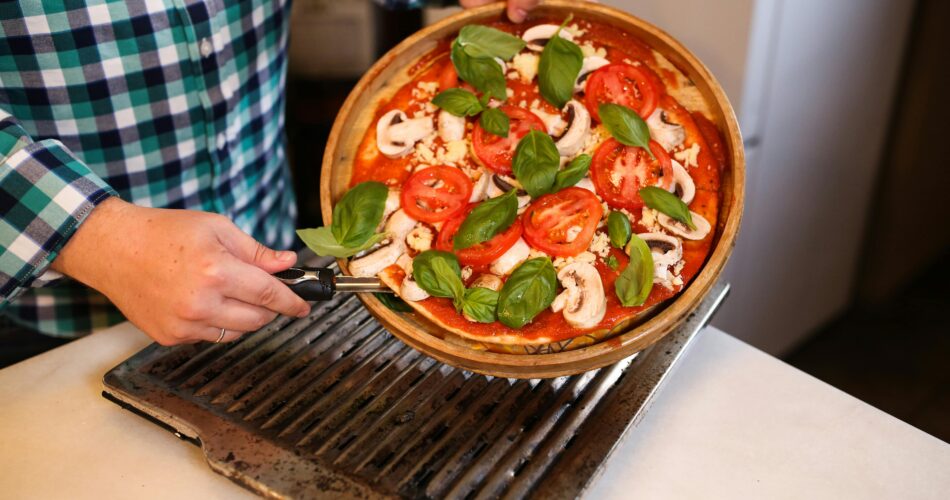10 Clean Eating Tips for a Healthier You
Embarking on a clean eating journey can feel like a monumental shift, but it doesn’t have to be overwhelming. Clean eating is about making conscious choices to nourish your body with whole, unprocessed foods. This approach focuses on simplicity, flavor, and the incredible benefits of real food. Ready to transform your well-being? Let’s explore ten essential clean eating tips that can guide you toward a healthier, happier you.
Section 1: Understanding Clean Eating
Clean eating isn’t a diet, but rather a lifestyle centered around consuming foods in their most natural state. The core principles are about minimizing processed ingredients, added sugars, unhealthy fats, and artificial additives. Instead, it emphasizes fruits, vegetables, lean proteins, whole grains, and healthy fats.
What Does Clean Eating Really Mean?
Think of clean eating as a return to the basics. It’s about choosing foods that are as close to their original form as possible. This means opting for an apple over apple juice, a whole grain bread over white bread, and grilled chicken over processed lunch meats. The goal is to fuel your body with nutrients that support optimal health and energy levels.
Benefits of Embracing Clean Eating
The benefits of adopting a clean eating lifestyle extend far beyond weight management. Improved energy levels, clearer skin, better digestion, a stronger immune system, and reduced risk of chronic diseases are just some of the potential rewards. By nourishing your body with whole foods, you’re providing it with the building blocks it needs to thrive.
Section 2: Top 10 Clean Eating Tips
Now that you understand the foundations of clean eating, let’s dive into ten actionable tips that will help you successfully integrate this healthy lifestyle into your daily routine.
1. Read Labels Carefully
Becoming a savvy label reader is crucial. Pay close attention to serving sizes, ingredients lists, and nutritional information. Be wary of hidden sugars, artificial sweeteners, and excessive sodium. A shorter ingredients list generally indicates a less processed food. Look for whole, recognizable ingredients.
2. Focus on Whole, Unprocessed Foods
Prioritize fruits, vegetables, lean proteins, whole grains, and healthy fats. Fill your plate with vibrant colors and diverse textures. Examples include:
- Fruits: Berries, apples, bananas, oranges, melons
- Vegetables: Leafy greens, broccoli, carrots, peppers, tomatoes
- Lean Proteins: Chicken breast, fish, beans, lentils, tofu
- Whole Grains: Brown rice, quinoa, oats, whole wheat bread
- Healthy Fats: Avocado, nuts, seeds, olive oil
3. Cook More at Home
Preparing your own meals gives you complete control over ingredients and portion sizes. Experiment with new recipes and flavors. Meal prepping on the weekends can save you time and ensure you have healthy options available throughout the week.
4. Limit Processed Foods, Sugar, and Salt
Reduce your intake of processed foods, sugary drinks, and excessive salt. These can contribute to weight gain, inflammation, and other health problems. Opt for natural sweeteners like honey or maple syrup in moderation. Use herbs and spices to flavor your meals instead of relying on salt.
5. Stay Hydrated
Drinking plenty of water is essential for overall health and well-being. Water helps flush out toxins, regulates body temperature, and keeps you feeling full. Aim for at least eight glasses of water per day.
6. Plan Your Meals
Planning your meals ahead of time can prevent impulsive unhealthy choices. Create a weekly meal plan and grocery list to ensure you have all the ingredients you need. This will also save you time and money.
7. Snack Smart
Choose healthy snacks to keep you energized between meals. Good options include fruits, vegetables with hummus, nuts, seeds, or Greek yogurt. Avoid processed snacks like chips, candy, and sugary drinks.
8. Embrace Healthy Fats
Incorporate healthy fats into your diet. Avocado, nuts, seeds, and olive oil are excellent sources of essential fatty acids that support brain health, heart health, and overall well-being.
9. Be Mindful of Portion Sizes
Even healthy foods can contribute to weight gain if consumed in excess. Pay attention to portion sizes and avoid overeating. Use smaller plates and bowls to help control your portions.
10. Don’t Be Afraid to Indulge (Occasionally!)
Clean eating is a lifestyle, not a punishment. Allow yourself occasional indulgences without guilt. A small treat can help you stay on track in the long run. The key is moderation.
Section 3: Simple Swaps for Clean Eating
Making small, gradual changes can have a big impact on your overall health. Start by swapping out processed foods for whole, unprocessed alternatives. Here are some easy swaps to get you started:
Swap White Bread for Whole Grain Bread
Whole grain bread is higher in fiber, which helps you feel fuller for longer and supports healthy digestion. Look for bread that lists whole wheat flour as the first ingredient.
Swap Sugary Drinks for Water or Unsweetened Tea
Sugary drinks are a major source of empty calories. Replace them with water, unsweetened tea, or sparkling water with a squeeze of lemon or lime.
Swap Processed Snacks for Fruits and Vegetables
Instead of reaching for chips or candy, grab a piece of fruit or some vegetables with hummus. These healthy snacks provide essential vitamins, minerals, and fiber.
Swap Refined Grains for Whole Grains
Choose brown rice, quinoa, or oats over white rice or refined pasta. Whole grains are more nutritious and provide sustained energy.
Swap Processed Meats for Lean Protein
Replace processed meats like bacon and sausage with lean protein sources like chicken breast, fish, or beans.
Swap Sugary Cereals for Oatmeal
Start your day with a bowl of oatmeal instead of sugary cereals. Oatmeal is a great source of fiber and can help you feel full and energized.
Section 4: Creating a Clean Eating Meal Plan
A well-structured meal plan is your best friend on your clean eating journey. It helps you stay organized, makes grocery shopping easier, and reduces the temptation to make unhealthy food choices. Here’s how to create a simple and effective clean eating meal plan:
Planning Your Breakfasts
Focus on protein, fiber, and healthy fats to keep you energized throughout the morning.
- Options: Oatmeal with berries and nuts, Greek yogurt with fruit and granola, whole-wheat toast with avocado and egg.
Planning Your Lunches
Pack a lunch that is both satisfying and nutritious.
- Options: Salad with grilled chicken or fish, whole-grain wrap with hummus and vegetables, leftover dinner.
Planning Your Dinners
Make dinner the centerpiece of your clean eating plan.
- Options: Baked salmon with roasted vegetables, lentil soup, chicken stir-fry with brown rice.
Planning Your Snacks
Keep healthy snacks on hand to avoid unhealthy cravings.
- Options: Apple slices with almond butter, carrots and celery with hummus, a handful of almonds.
Example Meal Plan
-
- Monday:
Breakfast: Oatmeal with berries and nuts
Lunch: Salad with grilled chicken and mixed greens
Dinner: Baked salmon with roasted asparagus
Snacks: Apple slices with almond butter, a handful of almonds
-
- Tuesday:
Breakfast: Greek yogurt with fruit and granola
Lunch: Whole-grain wrap with hummus and vegetables
Dinner: Lentil soup with whole-wheat bread
Snacks: Carrots and celery with hummus, a piece of fruit
-
- Wednesday:
Breakfast: Whole-wheat toast with avocado and egg
Lunch: Leftover baked salmon and roasted asparagus
Dinner: Chicken stir-fry with brown rice
Snacks: Apple slices with peanut butter, a handful of walnuts
-
- Thursday:
Breakfast: Oatmeal with fruit and nuts
Lunch: Salad with chickpeas and mixed greens
Dinner: Turkey meatballs with zucchini noodles
Snacks: Cottage cheese with berries, a piece of fruit
-
- Friday:
Breakfast: Smoothie with spinach, banana, and protein powder
Lunch: Quinoa salad with vegetables and feta cheese
Dinner: Homemade pizza on whole-wheat crust with vegetables
Snacks: Hard-boiled egg, a handful of seeds
Section 5: Addressing Common Questions and Concerns
Starting a new eating lifestyle can bring up a lot of questions. Here are some answers to common concerns about clean eating:
FAQ:
Q: Is clean eating expensive?
A: It doesn’t have to be! Buying in-season produce, cooking in bulk, and planning your meals can help you save money. Prioritize whole foods over processed items, which often carry a higher price tag.
Q: Is clean eating time-consuming?
A: It can be at first, as you adjust to new recipes and habits. However, with meal prepping and planning, it can actually save you time during the week. Invest in some helpful kitchen tools and find quick, easy recipes.
Q: Can I still eat out while clean eating?
A: Yes! Choose restaurants that offer healthy options and be mindful of your choices. Opt for grilled or baked dishes over fried, and ask for sauces and dressings on the side. Focus on ordering lean protein, vegetables, and whole grains.
Q: What if I have cravings?
A: Cravings are normal! Acknowledge them without judgment. Sometimes, a craving is a sign that you’re not getting enough of a particular nutrient. Try drinking water, eating a healthy snack, or going for a walk to distract yourself. If you still crave something, allow yourself a small portion without guilt.
Q: How long does it take to see results from clean eating?
A: Results vary from person to person, but many people report feeling more energetic, sleeping better, and experiencing improved digestion within a few weeks. Long-term benefits include weight management, reduced risk of chronic diseases, and improved overall health.
Q: Is clean eating sustainable?
A: Absolutely! Clean eating is a lifestyle, not a fad diet. Focus on making gradual, sustainable changes that you can maintain over the long term. Allow yourself occasional indulgences and don’t be too hard on yourself. The key is to find a balance that works for you.
By embracing these tips and principles, you can successfully integrate clean eating into your life and enjoy the many benefits of a healthier, happier you. Remember to be patient with yourself, celebrate your progress, and enjoy the journey!



